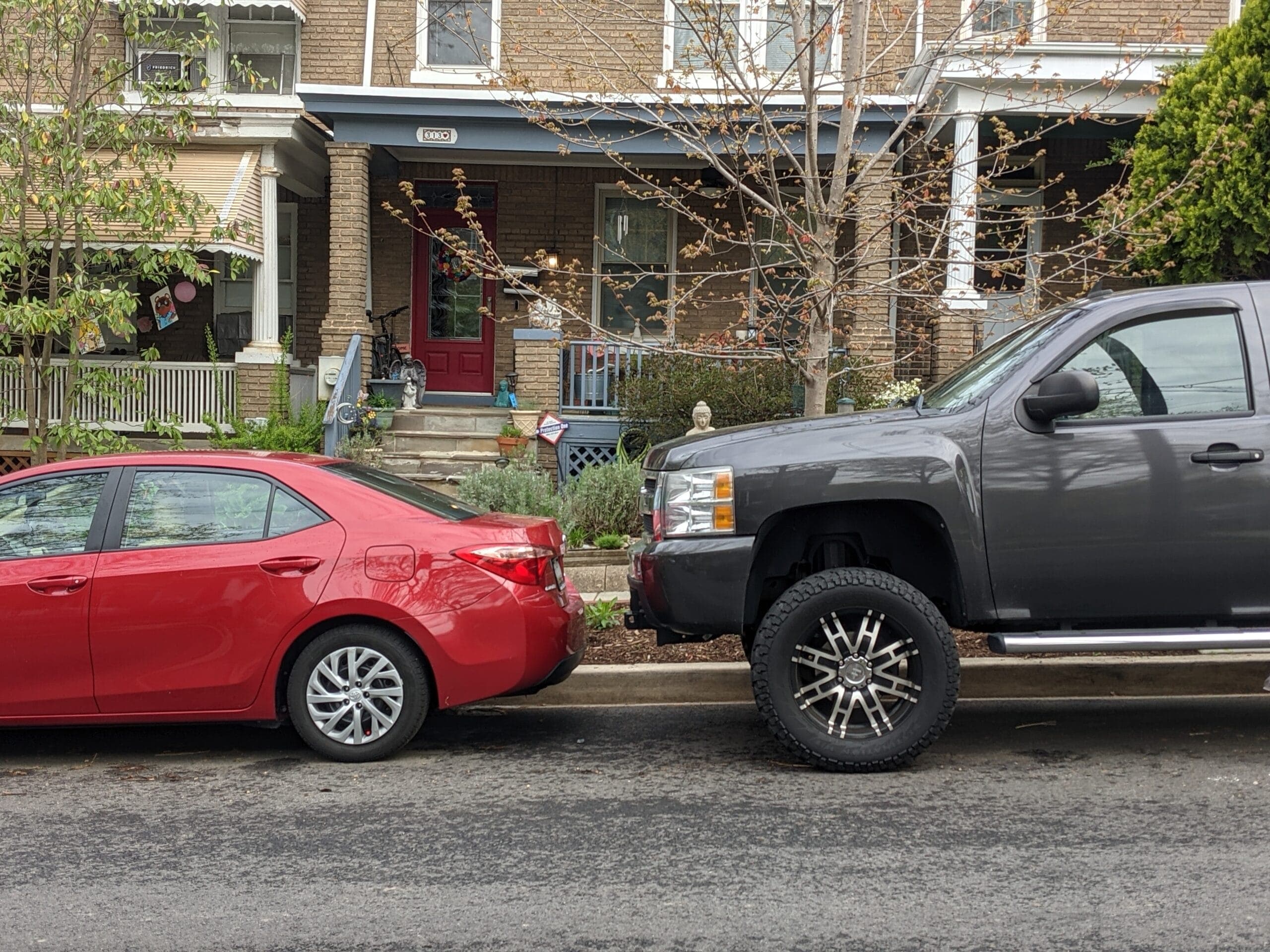
News
By Smart Growth America, July 12, 2022
While Dangerous by Design 2022 focuses on street design, the increasing size and weight of personal vehicles are also having an impact on the steadily increasing number of people struck and killed while walking. In addition to designing safer streets, improving vehicle design along four main criteria is also critical for reducing pedestrian fatalities.

By Mike McGinn, Executive Director of America Walks, former Seattle Mayor
Weight: Heavier vehicles like trucks and SUVs, which make up a growing share of both the current fleet and new vehicle sales each year, are more dangerous to both pedestrians and people inside of other vehicles. Their increased weight, combined with higher speeds, increases the likelihood of death. A 2015 study by the Department of Transportation found that “pedestrians are 2–3 times more likely to suffer a fatality when struck by an SUV or pickup truck than when struck by a passenger car.”
Size: Vehicle size can also increase the likelihood of a pedestrian fatality in what should be obvious ways. Pedestrians struck in the lower body by a sedan are more likely to roll over the vehicle and survive the crash. Those struck directly in the pelvis, chest, or head by today’s much taller vehicles are more likely to die upon impact or be pulled under the vehicle and crushed by the wheels.

Visibility: Taller vehicles decrease the visibility of people walking, increasing the likelihood of a crash. Today’s typical passenger pickup trucks and SUVs have significant front blind spots caused by large hoods and bumpers that can eclipse most pedestrians, especially those who are shorter, like children. Large a-pillars (the frame of the car between the windshield and the driver and passenger windows) are wider and larger on trucks and SUVs, contributing to lower visibility while making turns. In fact, when pedestrians are killed by a turning vehicle, the driver is far more likely to be behind the wheel of an SUV or pickup truck. So if someone walks out into a crosswalk in front of or near a pickup truck or SUV, even if the pedestrian has the right of way, the driver is less likely to see the pedestrian, increasing the odds of a deadly crash. Like the roadway design practices discussed in this report, these vehicle designs set drivers up to fail—to not see people walking until it is too late—and both people walking and drivers pay the price.
Psychology and marketing: Low visibility and high weight create an intimidating and powerful-looking vehicle—a fact not lost on the drivers of these vehicles and leveraged by automobile manufacturers and their marketing efforts. Advertising campaigns for Ford, Hummer, and Jeep rely on militarized language that contributes to a paramilitary aesthetic and aggressive driving mentality.
The evolution of each of these four design elements is producing more danger, and is likely a major culprit in our growing rate of traffic fatalities. Truck sales are increasing as a percentage of the U.S. vehicle market share. Front blind zones continue to grow. Electric vehicles, which are taking up an ever-larger share of the passenger car market, are much heavier than cars with internal combustion engines. Is anyone in charge of protecting the safety of the traveling public paying attention?
The pending update to the New Car Assessment Program (NCAP), a federal program that rates new cars on safety metrics, had the opportunity to penalize vehicles that perform poorly on the above metrics. But USDOT decided to focus on pedestrian-sensing technology in new vehicles. While technology can help avoid some crashes—and the fact that NCAP finally mentions pedestrians at all is unfortunately an improvement—technology alone will do nothing to make crashes that do occur with these vehicles any less deadly for pedestrians. Passenger vehicles that are proven to increase the likelihood of a pedestrian fatality should not receive five-star safety ratings. NCAP must change this or these ratings will remain useless to slow or stem the tide of pedestrian fatalities. And safety ratings alone are not sufficient, since they simply provide information. We must update vehicle performance standards to require safer vehicle design for pedestrians. America Walks, among others, has been beating the drum on this, as should everyone interested in pedestrian safety.

Smart Growth America thanks Mike McGinn and America Walks for their help and support with Dangerous by Design 2022.
Related News

© 2025 Smart Growth America. All rights reserved
Site By3Lane Marketing
















